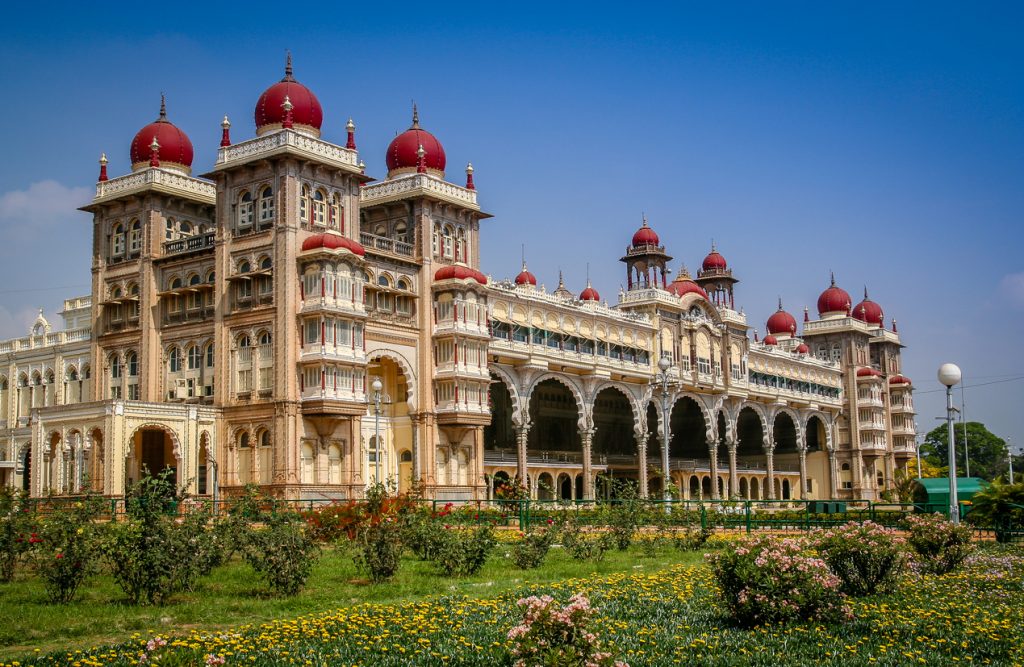Source of all Images in this Blog-post : Google Images : ‘Google Image Search’ will reveal the multiple sources of every single image shared in this Blog. For more details, kindly see ‘Disclaimer‘
Official Website of Mysore Palace
The Palace of Mysore (also known as the Amba Vilas Palace) is a palace situated in the city of Mysore in Karnataka in India. It is the official residence of the Wodeyars – the royal family of Mysore, and also houses two durbar halls (ceremonial meeting hall of the royal court).

Mysore is commonly described as the City of Palaces, however, the term Mysore Palace specifically refers to one within the old fort. The Wodeyar kings first built a palace in Mysore in the 14th century, it was demolished and constructed multiple times. The current palace construction was started in 1897, and it was completed in 1912 and expanded later around 1940.
Mysore palace is now one of the most famous tourist attractions in India after Taj Mahal with more than 2.7 million visitors. Although tourists are allowed to visit the palace, they are not allowed to take photographs inside the palace

The architectural style of the palace is commonly described as Indo-Saracenic, and blends together Hindu, Muslim, Rajput, and Gothic styles of architecture. It is a three-storied stone structure, with marble domes and a 145 ft five-storied tower. The palace is surrounded by a large garden.

Above the central arch is an impressive sculpture of Gajalakshmi, the goddess of wealth, prosperity, good luck, and abundance with her elephants.

Every autumn, the Palace is the venue for the famous Mysore Dasara festival, during which leading artists perform on a stage set up in the palace grounds. On the tenth day of the festival Vijaya Dashami, a parade with caparisoned elephants and other floats originate from the palace grounds.

Dasara is the most extravagant festival of Mysore. The Dasara festival is celebrated in the months of September and October of each year.
This festival has been celebrated by the Wodeyars in Mysore with great pomp since 1799 and the tradition still is carried on although the scale of the celebrations has diminished. The Dasara festivities have become an integral part of the cultural life in Mysore.
Entry to the palace is through the Gombe Thotti or the Doll’s Pavilion, a gallery of traditional dolls from the nineteenth and early twentieth centuries.

The palace complex includes twelve Hindu temples. The oldest of these was built in the 14th century, while the most recent one was built in 1953.



